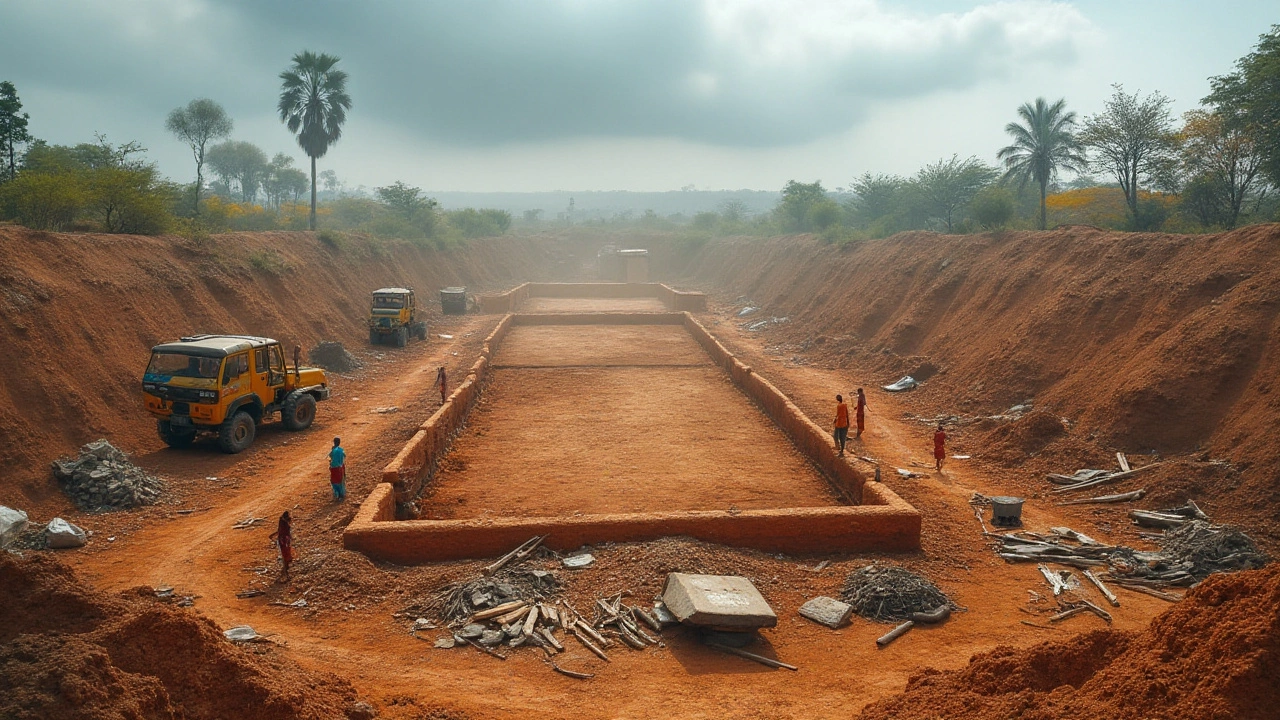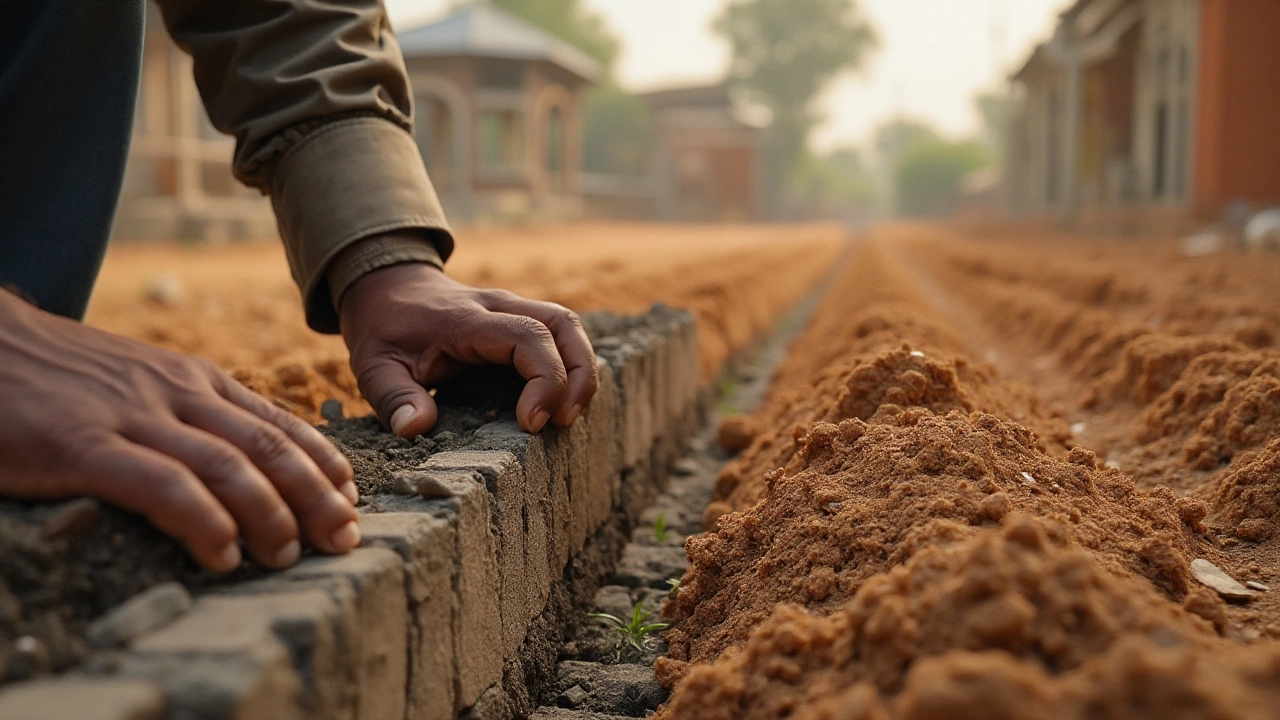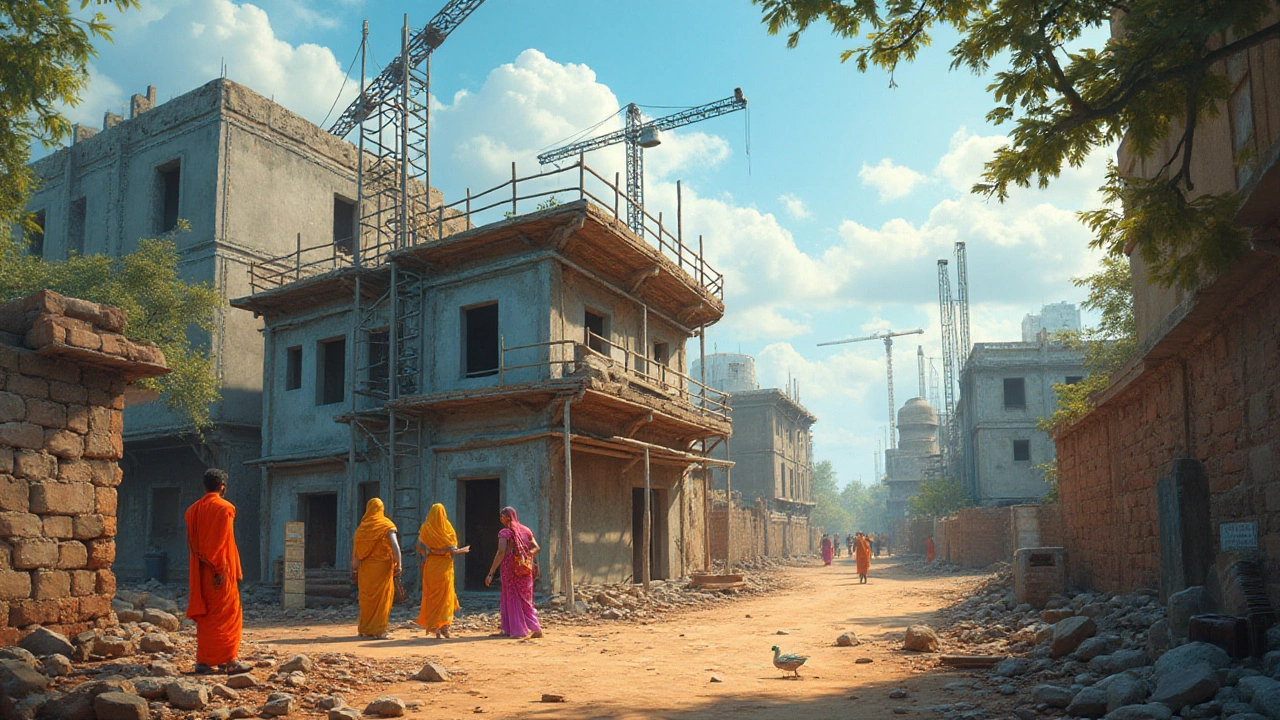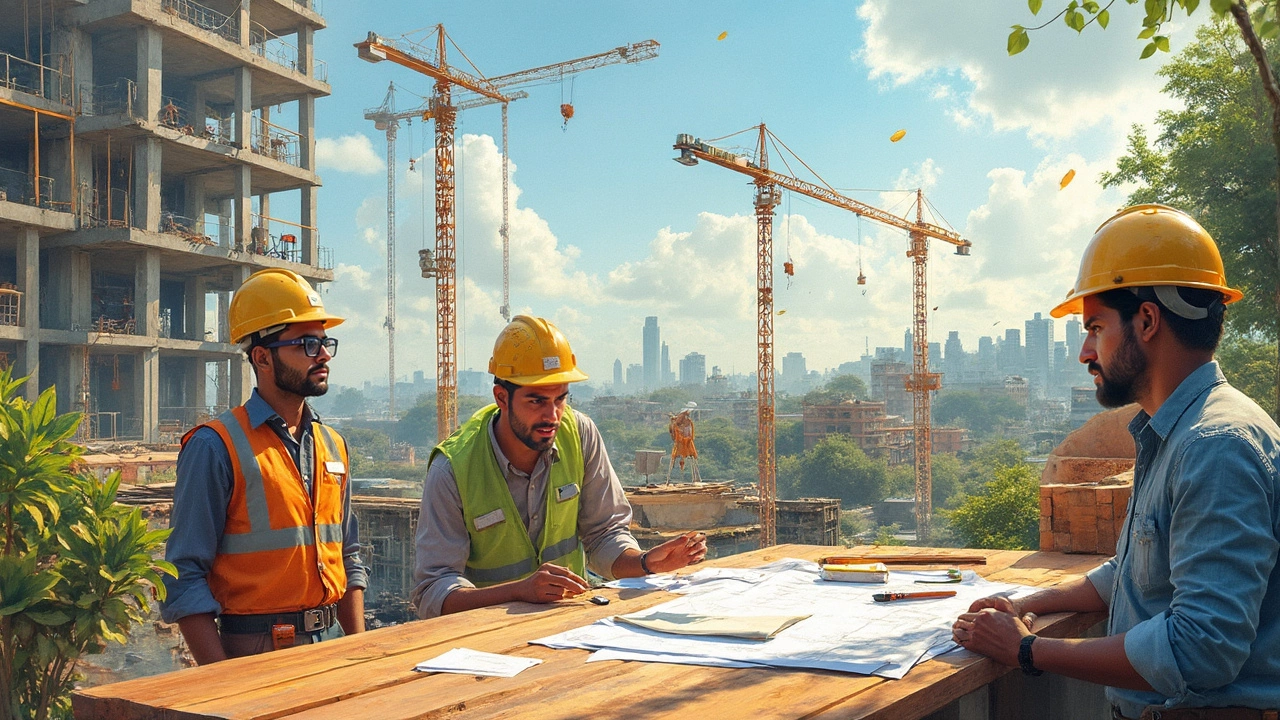Understanding How Long It Takes for New Buildings to Settle

Building a new structure is more than just an act of design and construction; it is a commitment to a future. And part of that future includes the natural process of settling. Settling refers to the period where a new building adjusts to its foundations and surroundings, and this isn't just a mundane checklist item—it is critical to the building's long-term health and stability.
Understanding why and how this happens can help you prepare for potential challenges. From the get-go, it's vital to know about the different factors that influence settling, as they can vary depending on soil type, foundation choices, and even the weather conditions during and after construction. So whether you're a homeowner, a budding architect, or simply curious, let this exploration into the settling world be your guide.
- The Science of Settling
- Factors Affecting Settling Time
- Signs of Settling
- Tips for Managing Settlement
The Science of Settling
Have you ever marveled at how a towering skyscraper or a quaint suburban home remains steady decade after decade? This stability is achieved through a fascinating process known as settling. At its core, settling is a natural response to the weight imposed on the ground by a new structure, and it is influenced by countless variables that intersect with the earth's very own science of dynamics. In essence, when a building is erected, it presses down on the ground beneath it, causing the soil and the foundation to adjust. This process is not simply about the weight but also about how the pressure is distributed and how the earth beneath reacts over time. It can take several months to years for a new build to fully settle, during which slight shifts and changes in alignment occur as part of this scientific ballet.
To comprehend the intricacies of this process, it's crucial to consider soil mechanics. The soil, just like any other natural material, has its own characteristics and behaviors. There are sandy soils, which allow water to drain quickly but may lack the strength needed to support large weights without shifting. Then we have clayey soils, known for their tendency to expand when wet and shrink when dry, sometimes causing significant movement in the structures above them. Architects and builders must often work with geotechnical engineers to analyze these properties, ensuring a design that compensates for these unique traits and minimizes long-term settling issues. It's fascinating to think of soil as a living, breathing element that interacts directly with what we build upon it.
The role of foundations in managing settling cannot be overstated. Foundations are like the hidden champions of construction, and their design is meticulously planned to accommodate the loads and counteract uneven settlement. Incorporating different foundation techniques—such as deep pile foundations driven into bedrock or the more standard slab-on-grade systems—depends largely on soil conditions and the specific needs of the structure. Each choice involves a dance between structural weight and soil physics. As an architect once put it, "Designing a foundation is like preparing a ship for the ocean; you plan for smooth sailing but prepare for storms." This perspective highlights the precision necessary when anchoring a building, ensuring stability long after the construction crews have left.
A key factor that influences the timeline of settling is the climatic conditions surrounding the project site. Weather elements like rain, temperature fluctuations, and seasonal changes can exacerbate or mitigate the settling process. Take, for example, a particularly wet season—rain can saturate the soil, leading to increased settlement rates, as water alters the soil’s structure and load-bearing capacity. In stark contrast, unusually dry spells might slow down the process but could also introduce issues such as soil contraction, particularly in clay-heavy regions. Understanding and monitoring these conditions allows builders to anticipate potential challenges and implement solutions—such as preemptive soil stabilization or drainage systems—well before they affect the building.
Even with all these scientific calculations, every building is unique, and settling can surprise even the most seasoned experts. This unpredictability is part of what makes construction a thrilling blend of art and science. Post-construction, it's not uncommon to observe slight fissures in drywall or tiny gaps where doors and windows meet their frames—a testament to the unseen natural movements. However, these shouldn't cause panic; rather, they're an opportunity to learn and adapt maintenance routines. Regular inspections by professionals can help address these nuances, ensuring that the settling doesn't compromise the integrity of the build. Remember, settling isn't just a phenomenon; it's nature’s way of whispering, "You're here to stay."

Factors Affecting Settling Time
The settling time of a new building is influenced by a multitude of factors, each contributing to the unique timeline of stabilization for that specific structure. A primary factor is the soil type. Different soils have varying load-bearing capacities and reputations for stability. For instance, sandy soil tends to drain water quickly, reducing the risk of water logging. However, this can also mean a less stable foundation compared to more cohesive clay soil, which although retains water, can expand and compress, impacting the structural integrity over time.
Beyond the soil, foundation design plays a crucial role. Buildings with deep foundations, such as piles or drilled shafts, usually settle more gradually compared to those with shallow foundations. This is because deep foundations reach down to more stable strata, while shallow foundations depend on the top layers of soil. The choice between these foundation types often boils down to budget, design preferences, and ground conditions. Don’t overlook the material choice for the foundation either—concrete, for instance, shrinks slightly as it cures, contributing to the settling process.
According to the National Association of Home Builders, approximately 25% of new homes face structural defects related to uneven settling because of inappropriate foundation choices.
The climate and weather conditions during construction can’t be ignored. Wet conditions can cause the soil to expand, while dry conditions might lead it to contract. These changes affect how the foundation settles once construction concludes. Consistent fluctuations between these two conditions can significantly impact the building's settling timeframe. Geographic location thus becomes a key player in predicting settling times. For example, regions known for their seasonal extremes will often notice a more pronounced settling phase.
At times, the construction techniques and materials used can also determine settling. Technologies such as precast concrete slabs facilitate faster construction, but they may bring about rapid settlement if not installed correctly. Meanwhile, other construction practices that involve phased building, allowing certain parts of the building to settle initially before progressing to others, can effectively manage potential settling problems. Skilled builders often have strategies in place to counter known issues specific to an area, integrating solutions into the design and building stages.
To provide a clearer picture, a suitable table might compare some of these factors:
| Factor | Impact on Settling |
|---|---|
| Soil Type | Highly variable; clay causes more expansion/contraction |
| Foundation Design | Deeper foundations (piles) offer greater stability |
| Climate | Resolution of expansion/contraction issues depend on regional conditions |
| Construction Techniques | Impact efficiency and longevity of settling phase |
Understanding these factors is not just academic; it's highly practical. It influences everything from project planning to future maintenance schedules. It empowers property owners and project managers alike to anticipate potential issues and address them before they become problematic. By paying attention to these dynamics early in the construction phase, one lays the groundwork—quite literally—for a successful build.

Signs of Settling
The settling of a new building is a gradual process where the structure adjusts to its foundation and environment. This isn't something that happens overnight; in many cases, settling can take years. Identifying the signs of settling early can save you from dealing with more severe issues in the future. One of the most visual indicators of building settlement is the appearance of cracks. These can manifest in walls, floors, or ceilings, usually starting small but having the potential to widen over time. These aren't just superficial blemishes; they're like the whispers of a building, indicating where it might be adjusting or struggling. But not all cracks are equal—while hairline cracks might be normal, those wider than a quarter-inch could suggest more substantial settling.
Subtle Changes in Doors and Windows
Another noticeable sign is the way doors and windows function. You might find that they stick or jam unexpectedly, or refuse to latch properly even if they were once smooth and easy to handle. This often happens because as the building settles, it can warp or shift the frames. Adjustments to frames are a typical effect, but when doors become unusable, it may indicate significant settlement.Foundation design plays a crucial role here. Certain types of foundations, such as concrete slabs or those in areas with heavy clay soils, might show signs more prominently. Anecdotal evidence suggests that in regions predisposed to expansive soil types, residents should pay extra attention to window and door difficulties. To quote a renowned home inspector, "If your doors start sticking out of season, think of it as the house nudging you to check its vitals."
Yet another sign of settling occurs on the floors. You might notice floors that suddenly feel uneven, almost as though they've formed subtle hills and valleys underfoot. This isn't just feeling-sloped—it can lead to pooling of water in unwanted areas or general inconvenience when it comes to furniture placement, raising household safety concerns.
On a more structural level, settling can also manifest in the form of gaps appearing between walls and ceilings or floors. Should these become visible, it's crucial to seek assessment from a structural engineer. These openings can be entry points for moisture, adding another layer of concern. In some cases, you might even hear slight popping sounds as materials adjust and move—always keep an ear out because buildings do have their ways of communicating.
For those keen on data, a record from the National Association of Home Builders suggests that 10-15% of new builds experience some form of visible settling signs within the first year. While this might seem alarming, being forewarned allows you to address issues head-on. Keep a keen eye on your construction timeline, and remember: recognizing these signs early makes it all manageable.

Tips for Managing Settlement
Managing the settlement process efficiently is crucial for maintaining the long-term durability and safety of your new build. One essential tip is to have a thorough understanding of your site's soil type and its characteristics. Research shows that clay soils are most susceptible to expansive movements due to water content changes, which can considerably affect building settlement. By conducting a detailed geotechnical survey before construction, you will gain insights into soil behavior, allowing you to design more resilient foundations. Preparing for minor adjustments by incorporating flexible construction materials and techniques is another smart way to mitigate the effects of settling.
Regular inspections play a key role in catching signs of settling early. It's not uncommon for new builds to experience some degree of settling within the first few years, but being proactive can prevent small issues from becoming larger structural problems. Ensure that you or a professional inspector regularly checks for hairline cracks, sagging floors, or warped door frames. Setting up a maintenance schedule with frequent inspections can aid in spotting trouble and addressing it promptly.
"A well-planned maintenance strategy is imperative to uphold a structure's integrity through its settling phase," expounds John L. Benson, a seasoned structural engineer.New technology can assist here too; structural health monitoring systems can be set up with sensors to keep an eye on movement in real-time. Integrating technology can be a significant advantage because it provides continuous updates and alerts, enabling swift action when unusual shifts are detected.
A structured approach to landscaping around your new build can also have a considerable impact on managing settlement. Water drainage is a vital factor influencing construction timeline and settlement issues. Ensure proper grading away from the building to prevent water accumulation around the foundation. Additionally, planting trees and shrubs at a safe distance can help manage soil moisture levels and prevent root intrusion to the structural foundation.
Finally, be prepared to address any settling issues with foundational adjustments or repairs when necessary. Although major repairs may not be needed immediately, minor foundational adjustments can be undertaken to guarantee the continued safety and integrity of your property. Engaging with reputable contractors who understand the complexities of settling and who offer warranties for their work can provide peace of mind and ensure quality service over time.

